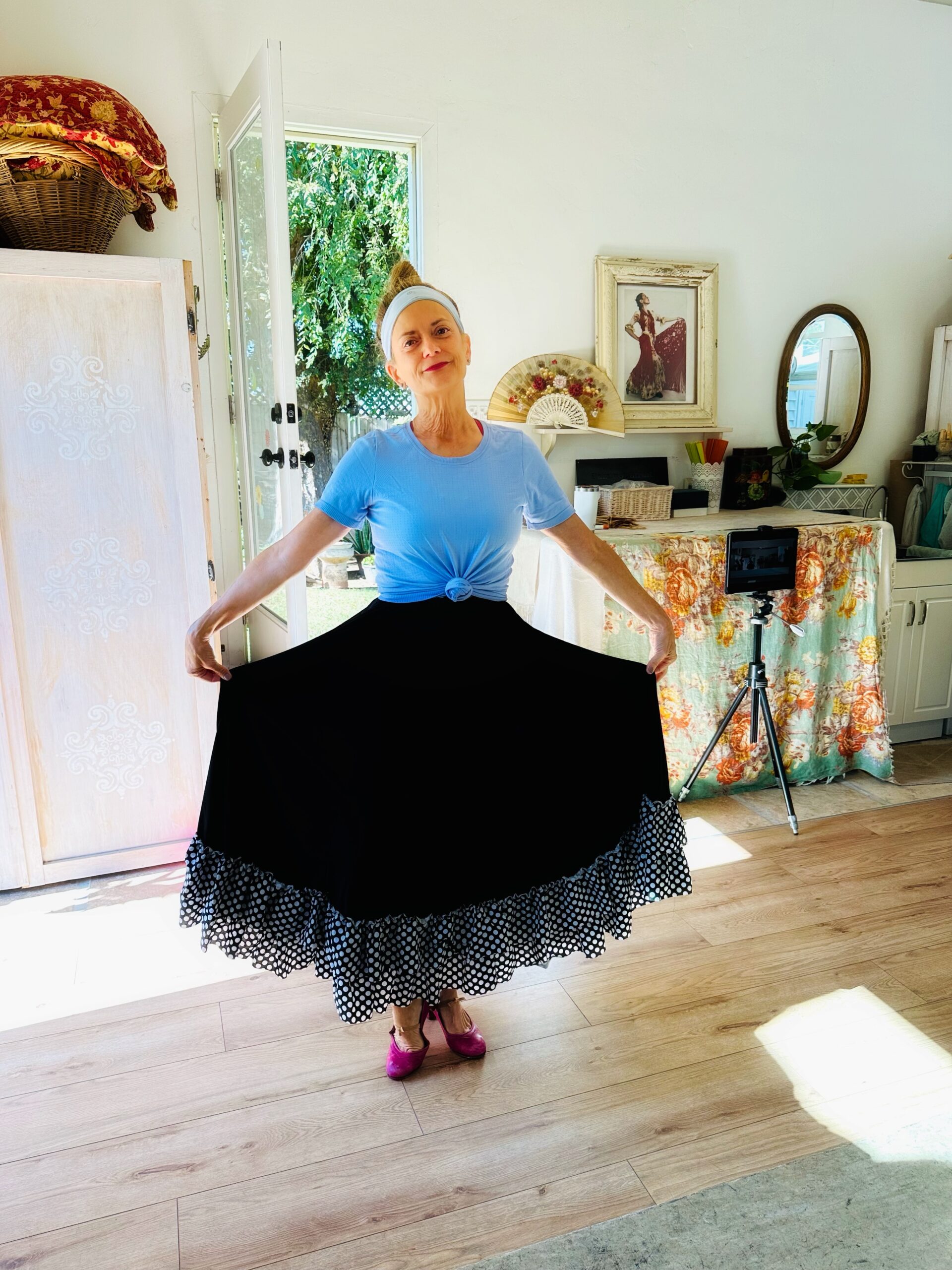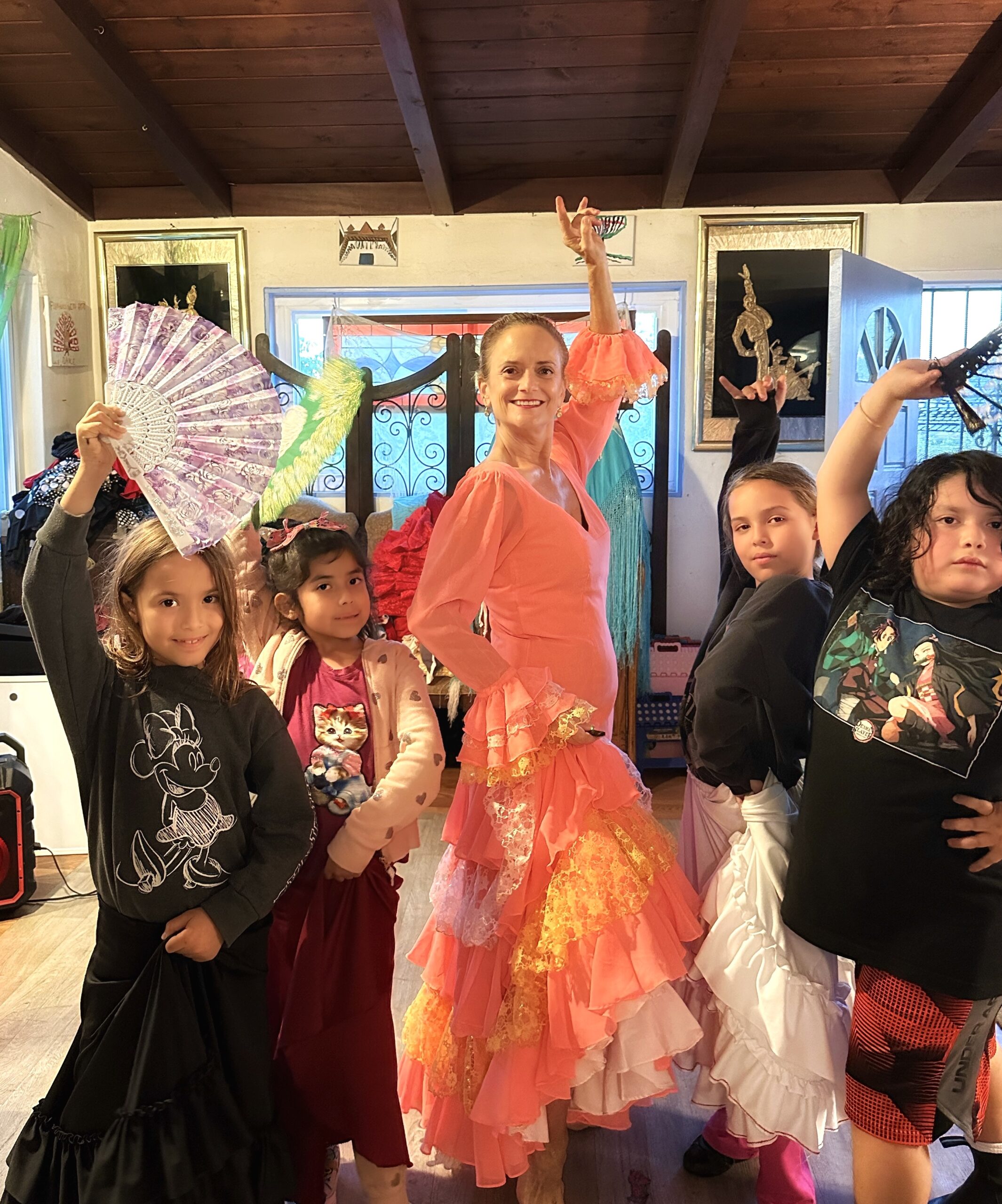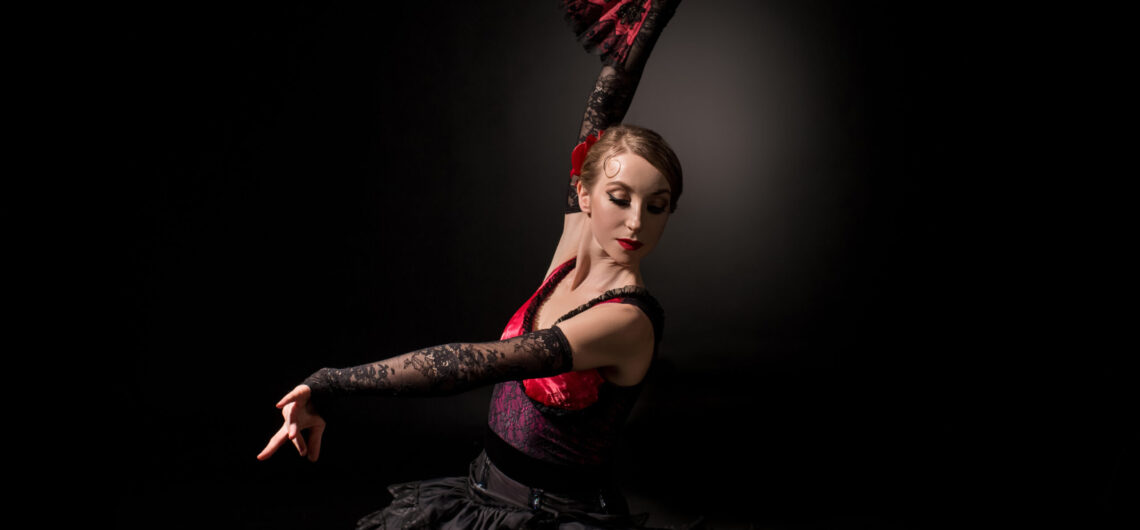One joy of travel is learning other countries traditions. Indigenous food, music, and dance all reveal culture handed down through generations.
These traditions are emblematic of the countries where they originate.
Travel is the great unifier. I find people eager to teach their practices, and equally as enthusiastic to learn other countries heritages. As we share our history, we learn people worldwide are more alike than different.
Spurred on by my birthday, over the next year I’ll engage in and highlight a different country’s particular ritual each month. Follow along to learn about these cultures and how you can partake in the tradition, too.
First up, Spain. Flamenco dancing. A fascinating art form from the southern Spanish region of Andalusia. Olé!

What to Wear
Flamenco dresses with their flowing layers and beautiful colors are recognized worldwide. The full length garment is called bata de cola and frequently made of polka-dot material decorated with ruffles inspired by native dress of the gypsies. Women usually wear these to perform. Most dancers wear a simpler traje de flamenca (skirt) and comfortable top when rehearsing.
If you’re just starting out, don’t invest a lot of money in the outfit.
Many studios have pre-owned shoes and/or skirts to lend. If you prefer to buy your own, inexpensive outfits are available online.
A skirt with playful polka-dots can cost less than $50. Here is a cute one: https://amzn.to/3SiBICF.
If solid is more your style, there are beautiful versions for under $30: https://amzn.to/4aUyMDF.
Woman’s flamenco shoes have a sturdy wooden heel, nails on the bottom of the toe and heel, a steel shank and steel toe. They are sturdy due to the excess pounding put upon them when dancing.
Although professional dancers’ flamenco shoes cost hundreds of dollars, a good pair for beginners can be found for $40. It’s important to purchase the correct shoe for comfort when dancing. Here is a good, low-priced shoe: https://amzn.to/41ZdxfL.

Finding a Teacher
To find a flamenco dancing teacher, start by searching online dance directories, classifieds, local community centers, or dance studios in your area.
Word of mouth is another way to find a studio. Tell friends you’d like to take flamenco lessons and ask if they know someone in the industry. I found my first teacher Rocio from my hairdresser.
Rocio left a career as a molecular biologist to pursue flamenco dancing in Sevilla, Spain for years before returning to California to teach.
Additionally, leverage social media to find a teacher. This is how I connected with my second teacher, Sonny.
Sonny teaches children ages three to twenty-two years old. The students in my class were eight and nine and could dance circles around me!
I wanted to experience two teachers during my month long deep-dive into flamenco dancing to see their different techniques. They both were excellent and passionate about their craft.

What You Learn in Beginners Flamenco Class
As a beginning flamenco dancer, you typically start by learning basic footwork (zapateado), arm placement (braceo), hand movements (flowers), and body posture.
Rhythm is crucial, and you’ll practice coordination between your feet and hands. This may sound easy but it’s the same difficulty as rubbing you stomach in a circle while simultaneously patting the top of your head.
Flamenco also emphasizes emotional expression, so you’ll work on conveying different moods through your movements. Patience and dedication are essential in mastering the intricate techniques.
Music and song play an essential role in flamenco.
The guitar accompaniment – toque – and singing — cante – take their lead from the dancer. This allows the performer to emote by abandoning themselves to the art and their feelings via dance.
I highly recommend you attend a live flamenco performance to understand it’s sheer beauty.
The emotive storytelling combined with dynamic body postures create visually stunning entertainment.
The dance reflects a rich cultural history passed down through the centuries of a truly beautiful and evocative art form.
Related Posts:
How to Decorate Your Home With Travel Souvenirs
Please note some of the links above are affiliate links, and at no additional cost to you, I earn a commission if you make a purchase. I would never recommend anything I don’t personally love. Please let me know if you have any questions.


Comments